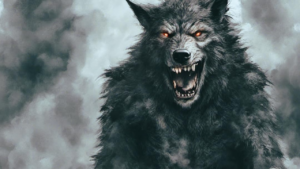For decades, tales of a mysterious creature known as the chupacabra have captured imaginations across the Americas. Described as a bloodthirsty predator that preys on livestock, particularly goats, the chupacabra has earned a place in modern folklore. But what exactly is the chupacabra? Is it a real animal, a misidentified predator, or a purely mythical being? To answer these questions, we must delve into the origins, descriptions, and scientific investigations surrounding this enigmatic creature.
Origins of the Legend
The chupacabra legend began in Puerto Rico in the mid-1990s, with its first major incident occurring in March 1995. A farmer discovered eight sheep dead, each with three small puncture wounds in their chests and reportedly drained of blood. This unusual discovery alarmed local residents and led to widespread speculation about an unknown predator.
Soon after, a woman named Madelyne Tolentino reported seeing a strange creature near her home in the town of Canóvanas. She described it as a reptilian beast about three to four feet tall, with spines running down its back, glowing red eyes, and an almost alien-like appearance. Tolentino’s vivid account became the basis for many subsequent descriptions of the chupacabra.
These reports gained significant traction when Canóvanas’ then-mayor, José “Chemo” Soto, organized a hunt for the creature, further fueling media coverage. Soto reportedly led teams of volunteers armed with rifles and machetes into the surrounding countryside, determined to find the predator responsible for the livestock attacks. Although the hunts were unsuccessful, they amplified the media frenzy and drew international attention to the growing mystery.
The chupacabra legend was further shaped by a series of eerie livestock deaths reported across Puerto Rico. Farmers across the island discovered goats, chickens, and other animals with similar puncture wounds and drained bodies. In one particularly chilling case, over 150 animals were found dead within a single month, each killed in a manner consistent with earlier reports. These incidents deepened the belief that a new and dangerous predator was stalking the island’s rural areas.
The spread of the chupacabra story wasn’t limited to Puerto Rico. By the late 1990s, sightings and reports of similar attacks began to emerge in Mexico, Central America, and even the United States. Media outlets from different countries contributed to the narrative, often sensationalizing the events and portraying the chupacabra as a supernatural menace. In many ways, the chupacabra became a global phenomenon, fueled by a mix of fear, speculation, and sensational journalism.
Description of the Creature
Descriptions of the chupacabra vary widely. In its original Puerto Rican incarnation, it was depicted as a lizard-like creature standing about three to four feet tall, with sharp claws and a menacing demeanor. However, as the legend spread, new descriptions emerged.
In the southern United States, for instance, many alleged sightings described the chupacabra as a hairless, dog-like animal with a pronounced spine and gaunt features. These differing accounts have fueled debate over whether the chupacabra is a single species or a series of misidentified creatures.
Scientific Explanations
Scientists and skeptics have offered several plausible explanations for the chupacabra phenomenon. One of the most common theories is that the so-called chupacabras in the U.S. are actually coyotes or dogs suffering from severe mange, a skin condition caused by mites. Mange can cause animals to lose their fur and develop a sickly, gaunt appearance, aligning with many descriptions of the creature.
As for the claims of blood-drained livestock, experts argue that the evidence does not hold up under scrutiny. Veterinary examinations of alleged chupacabra victims often reveal that the livestock were killed by more conventional means, such as predation by known animals. The “drained blood” is frequently attributed to post-mortem pooling rather than any supernatural cause.
Cultural Impact
The chupacabra has become more than just a cryptid; it is a cultural icon. Its story has inspired countless books, films, and TV shows, from horror movies to episodes of The X-Files. In regions where sightings are common, the creature has also become a tourist attraction, with chupacabra-themed merchandise and tours.
For many rural communities, the chupacabra serves as a modern-day cautionary tale, reflecting fears of the unknown and the challenges of living in close proximity to nature.
Ongoing Debate
Despite scientific efforts to debunk the legend, the chupacabra continues to fascinate. Sightings are still reported, and the creature’s place in folklore remains secure. For some, the chupacabra is a symbol of unexplained mysteries that defy easy answers. For others, it is a reminder of how myths can grow from a mix of fear, imagination, and misinterpretation.
Conclusion
Whether a myth, a misidentified predator, or something in between, the chupacabra represents the enduring power of storytelling. Its legend sheds light on the human tendency to seek explanations for the inexplicable and to create narratives that resonate with our deepest fears and curiosities. The chupacabra may or may not walk among us, but its story will undoubtedly endure for generations to come.



